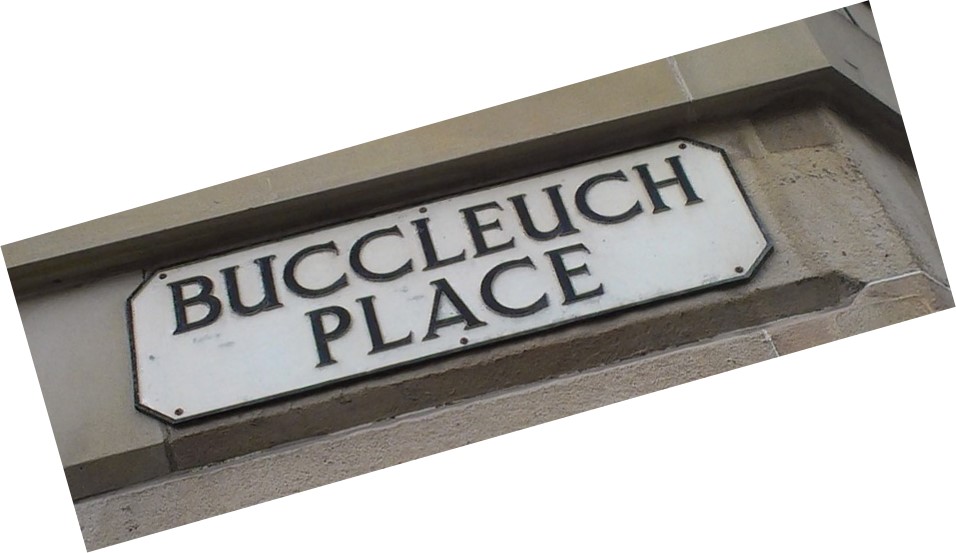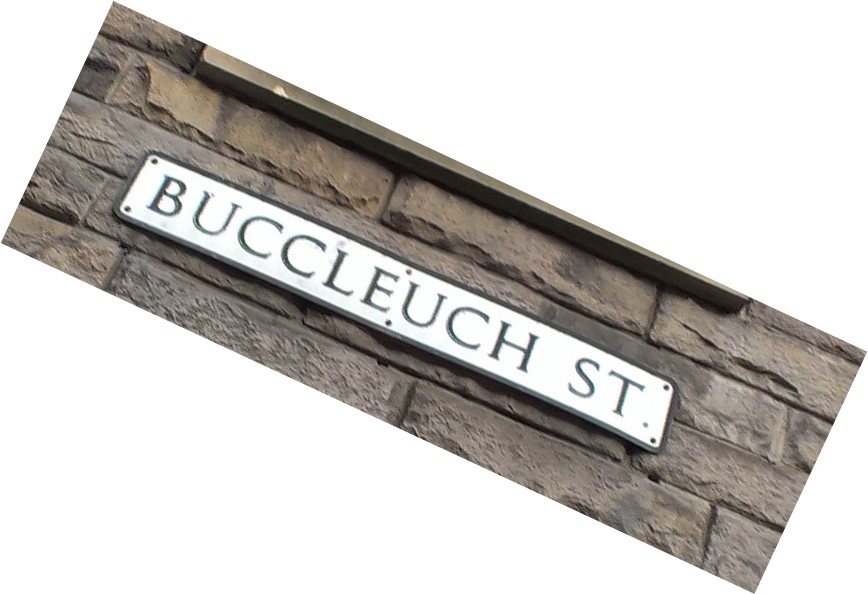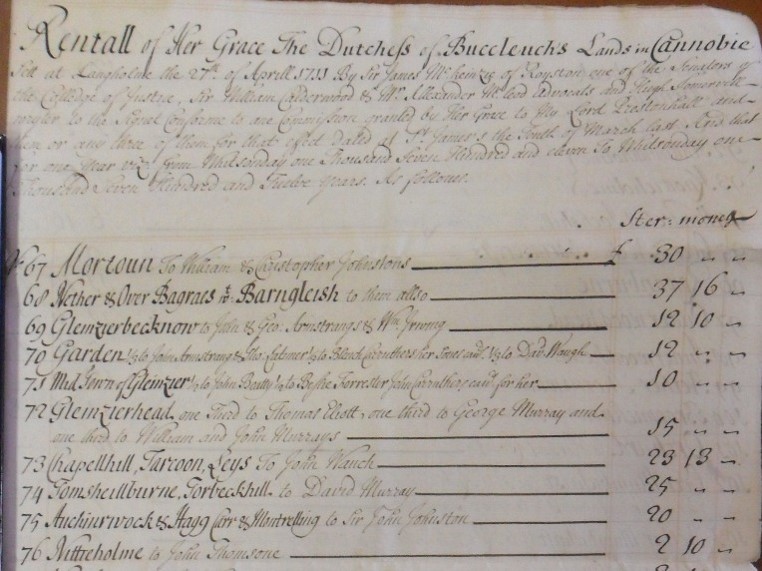In the 18th and 19th centuries, the largest single landowner in Dumfriesshire and the Scottish Borders was (and still is) the Duke of Buccleuch. Many ordinary people made their living on the Buccleuch estates – perhaps directly employed to serve in the castles and gardens, to provide labour for estate improvements , or to farm the land as tenants or sub-tenants of the Duke. It is therefore natural to consider what evidence might be left of such an ancestor in the archives of the estates.


Estates as large as Buccleuch generated a substantial amount of paperwork in routine administration on a day to day basis. Indeed the burden of administration was often contracted out to a range of parties including chamberlains and solicitors. As a result, there is very much a mixed picture of records across the estates – some have been kept meticulously and survived over hundreds of years. Others are sporadic and incomplete.
For those in the direct employ of the estate, the records are patchy. Some records of wages for named individuals for certain periods do survive but many have been lost. There are also some records of piece payments for specific work undertaken by contractors like quarrying or forestry.
It is possible to search the collection to see what might be available using the NRS search tool at http://catalogue.nrscotland.gov.uk/nrsonlinecatalogue/welcome.aspx. Enter ‘GD224’ in the Reference field to search only the Buccleuch collection.
The area which has perhaps been best preserved are the rental rolls for the farm tenancies which cover a period from around 1630 through to the 20th century. Many of these rolls are now in the care of the National Records of Scotland in a collection known as the ‘Buccleuch Muniments’. These include the estates of Dalkeith, Melrose, Eckford, Ettrick Forest and Kirkurd, Hassendean and Hawick, Teviotdalehead, Eskdale, Ewesdale, Westerkirk, Eskdalemuir, Liddesdale and Canonbie.
A rental document details the name of tenants and the amount which they were due to pay on an annual basis. On the face of it, that may not seem to be of much value to a family historian. However, the chamberlain who was responsible for drawing up the rental document would often add little snippets of helpful family information e.g. ‘George Armstrang, son to the old tenant’ can be very useful information when we have the possibility of consulting an earlier rental to find a ‘Robert Armstrang’ as the tenant at that particular farm several years before. If we read the tenants as ‘Jean Thomson and her son Robert Elliot’ then we can deduce that Jean Thomson’s husband was a Mr Elliot who was the former tenant and has now died (women are always given their maiden name in these rental documents) and Jean and Robert are now joint tenants. Brothers and uncles are also often mentioned too. There was a strong tradition of keeping tenancies in a family wherever possible in the Buccleuch Estates. I know this as my own ancestors were tenants at a single Buccleuch property for over 250 years.

In normal times, records held by the National Records of Scotland can be consulted if you can visit Register House in Edinburgh. But with Register House having been closed since March 2020, these are definitely not normal times. I have therefore made transcriptions of some Buccleuch rental rolls that I hold available for download on this website. These cover just two of the estates – Canonbie and Liddesdale. Some are free of charge and there is a small charge for others. I believe however that they will be of considerable value for people who have farming ancestors from this area. Years available at present are 1630, 1766-67 and 1814-15 for both Liddesdale and Canonbie and also 1792-93 for Canonbie. The later rolls in particular often feature not just main tenants but sub-tenants and cottars too with perhaps just a house and a very small patch of land for themselves. Further Canonbie rolls for 1683 and 1701 have just been added to the collection.
Records pertaining to the Queensberry Estate (surrounding Drumlanrig Castle in Dumfriesshire) remain with the Duke and so tracing ancestors on this estate is not as simple. However, I’m excited to announce that I’ll be able to offer some transcripted rentals for Queensberry Estate very soon.